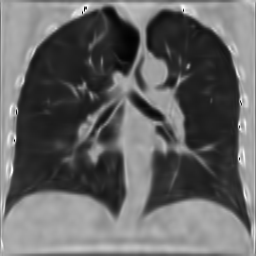
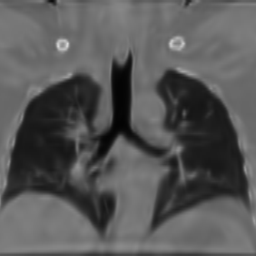
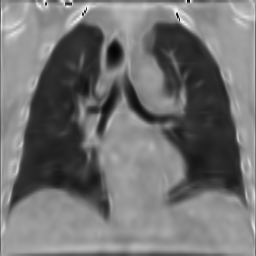



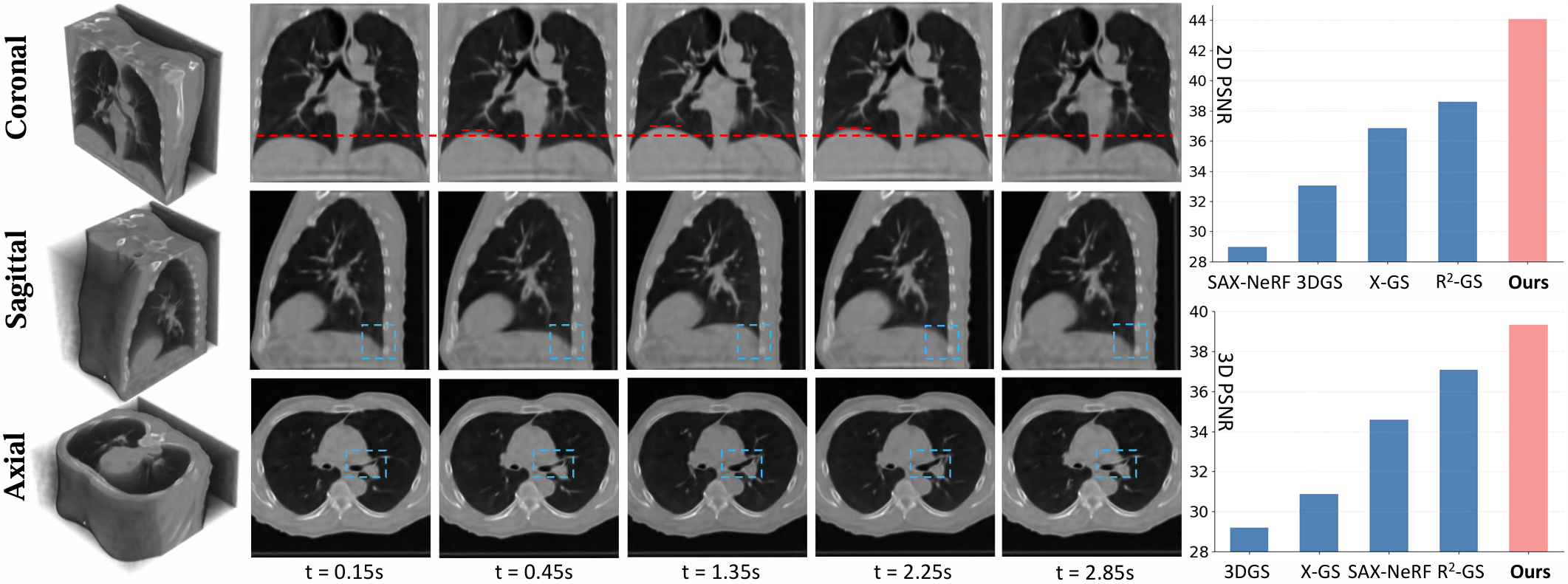
X$^2$-Gaussian demonstrates state-of-the-art reconstruction performance.
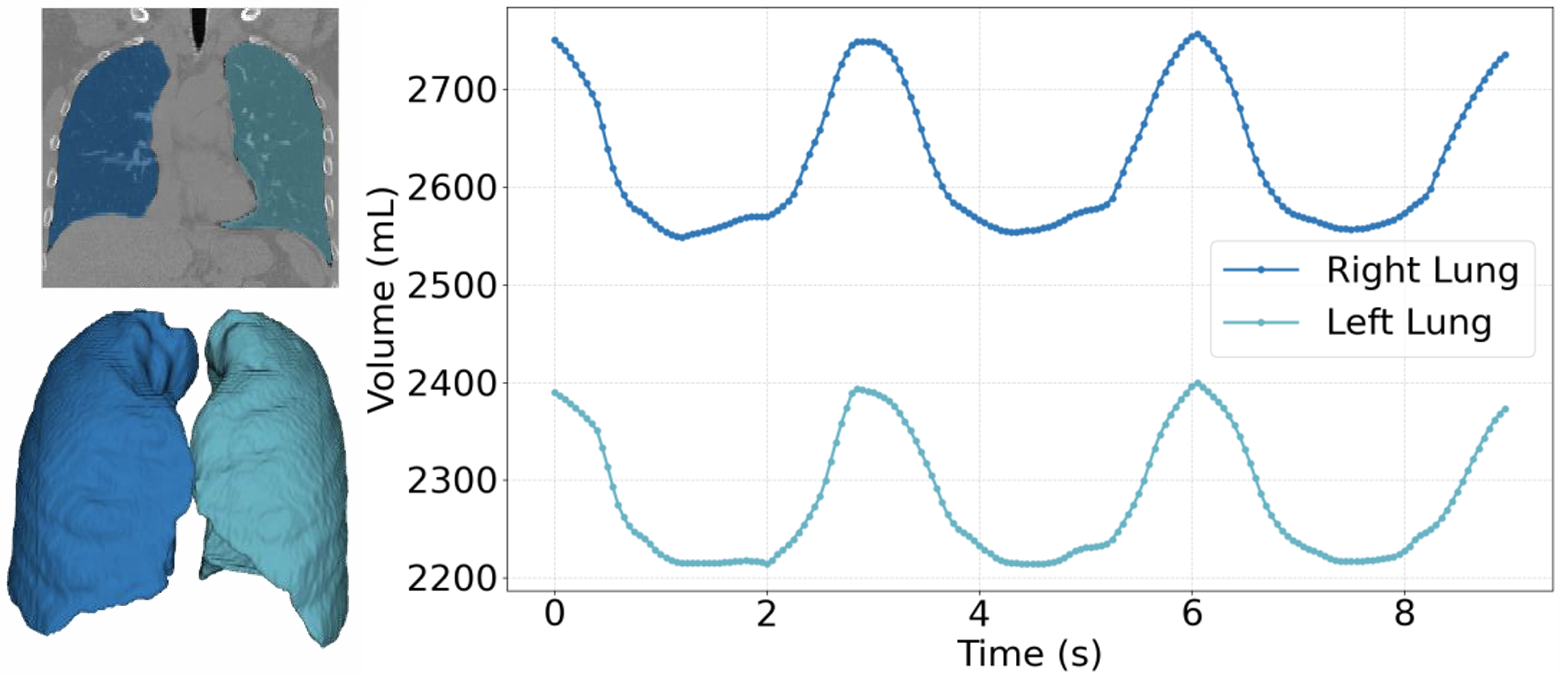
X$^2$-Gaussian achieves genuine continuous-time CT reconstruction without phase-binning. The figure illustrates temporal variations of lung volume in 4D CT reconstructed by X$^2$-Gaussian.
Four-dimensional computed tomography (4D CT) reconstruction is crucial for capturing dynamic anatomical changes but faces inherent limitations from conventional phase-binning workflows. Current methods discretize temporal resolution into fixed phases with respiratory gating devices, introducing motion misalignment and restricting clinical practicality. In this paper, We propose X$^2$-Gaussian, a novel framework that enables continuous-time 4D-CT reconstruction by integrating dynamic radiative Gaussian splatting with self-supervised respiratory motion learning. Our approach models anatomical dynamics through a spatiotemporal encoder-decoder architecture that predicts time-varying Gaussian deformations, eliminating phase discretization. To remove dependency on external gating devices, we introduce a physiology-driven periodic consistency loss that learns patient-specific breathing cycles directly from projections via differentiable optimization. Extensive experiments demonstrate state-of-the-art performance, achieving a 9.93 dB PSNR gain over traditional methods and 2.25 dB improvement against prior Gaussian splatting techniques. By unifying continuous motion modeling with hardware-free period learning, X$^2$-Gaussian advances high-fidelity 4D CT reconstruction for dynamic clinical imaging.
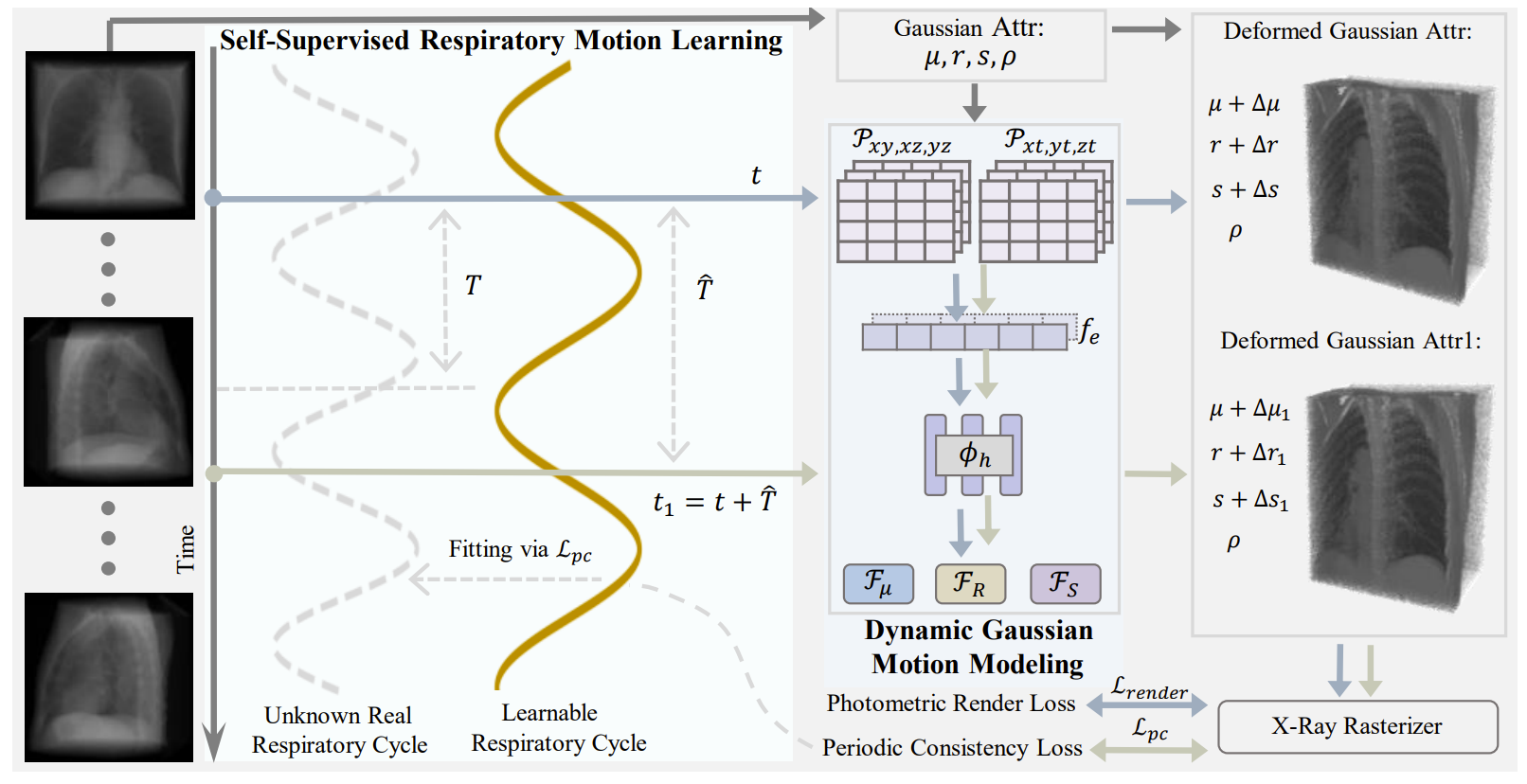
We design dynamic Gaussian motion modeling for continuous-time reconstruction,
and self-supervised respiratory motion learning for estimating breathing cycle autonomously.
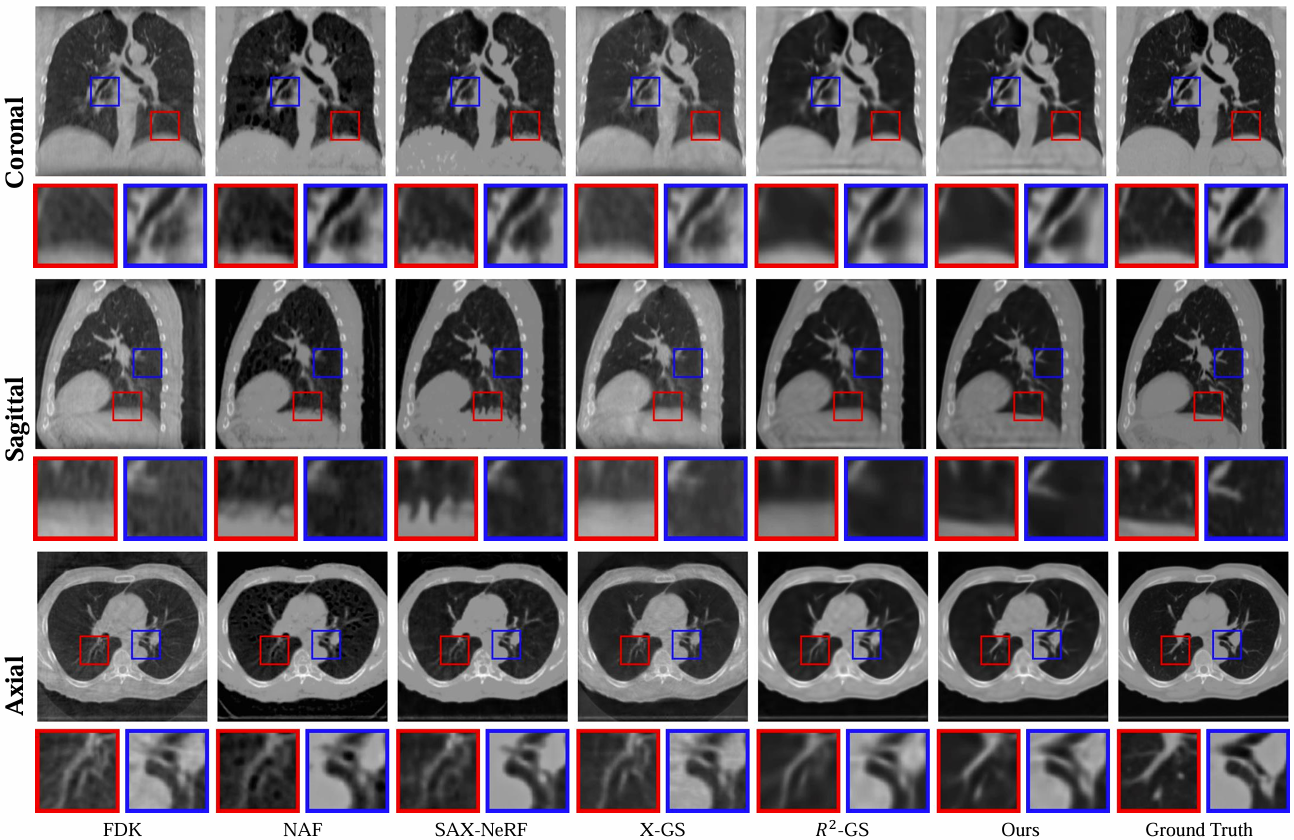
@article{yu2025x,
title={X $\^{}$\{$2$\}$ $-Gaussian: 4D Radiative Gaussian Splatting for Continuous-time Tomographic Reconstruction},
author={Yu, Weihao and Cai, Yuanhao and Zha, Ruyi and Fan, Zhiwen and Li, Chenxin and Yuan, Yixuan},
journal={arXiv preprint arXiv:2503.21779},
year={2025}
}